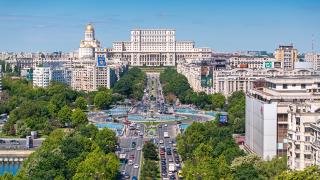Very few places in the world are enjoying the carnival building and development spending-spree that Brazil is currently witnessing. Cement producers are already operating at full capacity, and new facilities will add much needed cement to the market. Keeping pace with construction demand is proving difficult and the race is on to finish many important infrastructure projects for the FIFA World Cup and Olympic Games.
Brazil plans to address its growing infrastructure challenge as the country’s domestic market continues to expand rapidly. President-elect Dilma Rousseff will have to make vast regulatory improvements and boost incentives for private-sector investment in over-stretched roads, ports and airports if Brazil is to sustain its economic growth of recent years.
Rousseff, who takes office on 1 January, has already laid out a US$1trn investment plan meant to bring infrastructure in line with competitors in other emerging market nations such as India, Russia, and China, which together with Brazil form the BRIC nations.
The country’s infrastructure woes have been put on display with the slow pace of preparations for the 2014 FIFA World Cup and similar problems for the 2016 Olympics to be hosted in Rio de Janeiro.
Over the next four years the government is said to be investing more than US$440bn in infrastructure. In fact, the country that Rousseff will take control of has massive growth potential. Brazilian finance minister Guido Mantega said that the country's GDP will expand 7.5-8 per cent in 2010, which if confirmed will be its highest growth rate in 25 years. In the first half of the year, Brazil's GDP grew 8.9 per cent YoY.
There are, however, concerns going forward. Brazil faces the problem of controlling higher federal spending as the government attempts to fund both infrastructure development and burgeoning social programmes. The 2011 federal budget, for example, provides for a 9.4 per cent increase in spending against projected economic growth of only 4.5 per cent.
Moreover, a reduction in government spending would be essential to help the central bank reduce the country's interest rates, essential to sustain growth, expand employment and alleviate the cost of public sector debt. Brazil's benchmark interest rate currently stands at 10.75 per cent annually, one of the highest in the world.
The government also needs to attract private companies to help it achieve its infrastructure and development programmes. The cement sector is one area where a change has already begun and is in full swing.
